Jackson Pollock is the most famous artist of the American abstract expressionist art movement.
Drip Painting
Pollock gained attention for his unique technique of "drip painting.
In this technique, he paints by sprinkling paint on a canvas placed on the floor. Compared to the traditional Western method of standing the painting on an easel, the entire painting can be painted from various angles and in any direction.
This method is also called " all-over painting" or " action painting," and it is said that he painted as if he were dancing, using his entire body to slap the paint on the canvas.
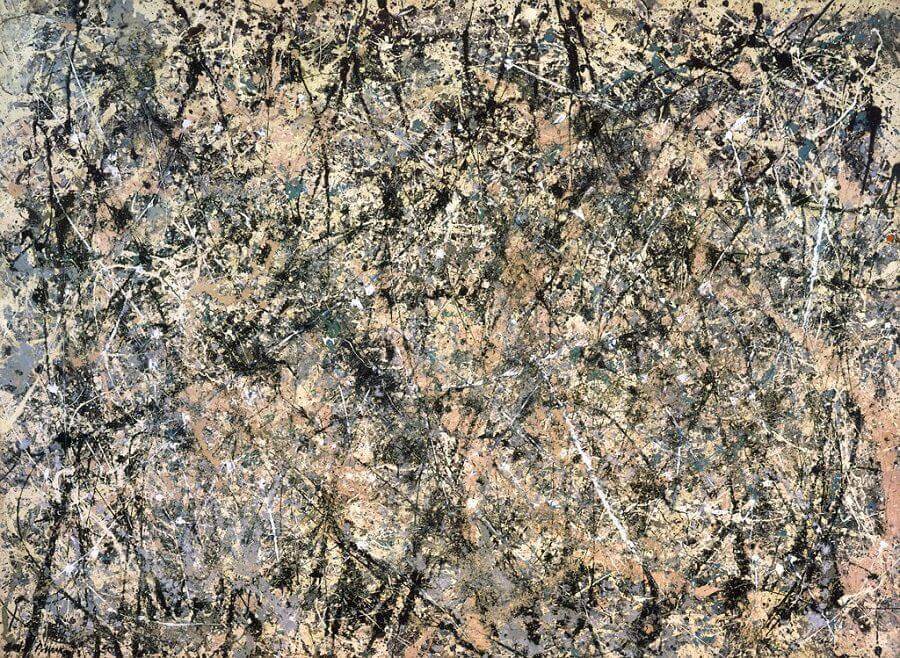
Number 1 (Lavender Mist), 1950
Symbol of the Artist
Pollock and his "drip paintings" became an icon of 20th century American art.
His troubled private life also became the prototype for the myth of the modern artist as rebel.
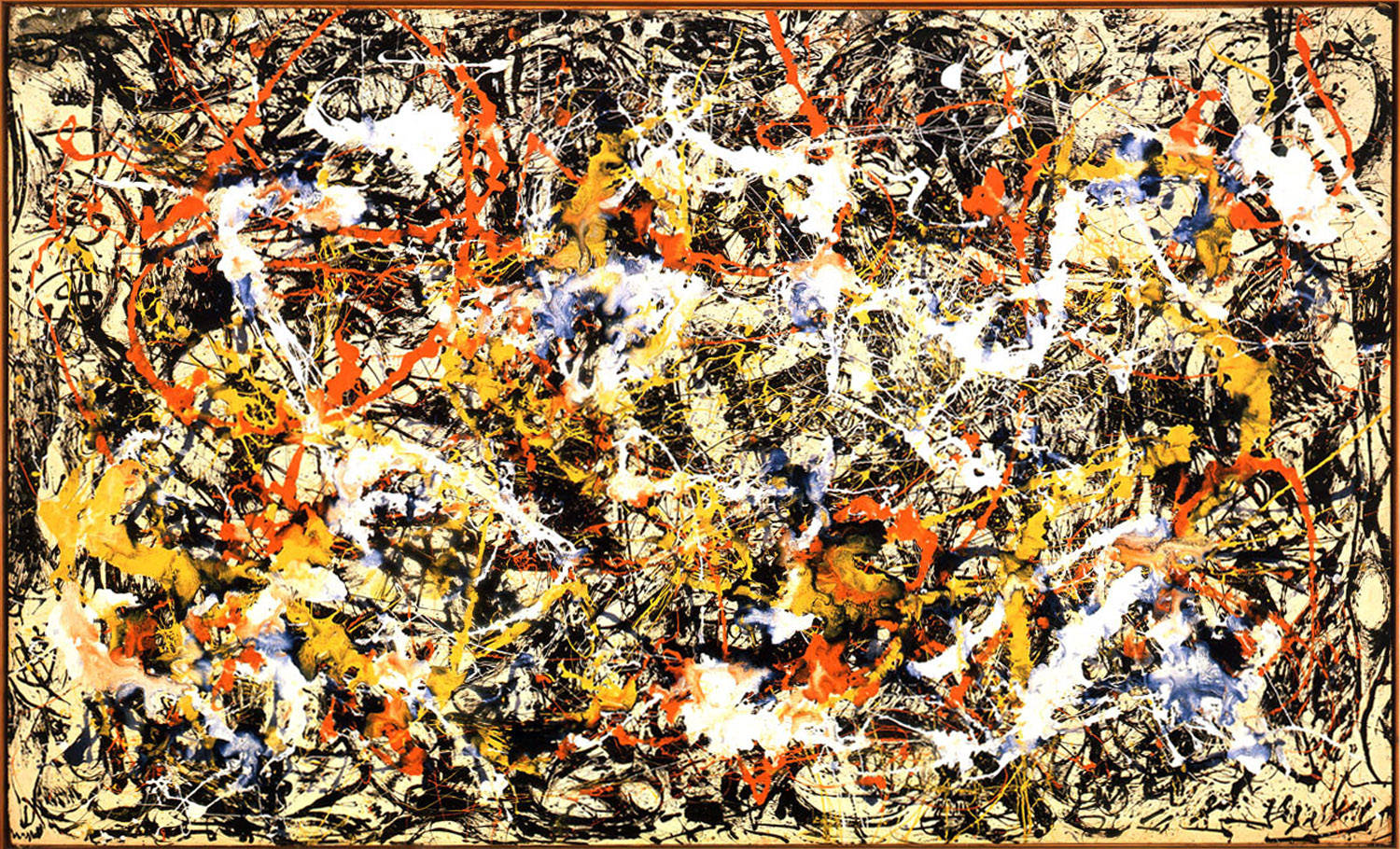
Convergence, 1952
Childhood
Pollock was born in Cody, Wyoming, and grew up with his four brothers in Arizona and California.
Although the family did not have much money, his mother cherished the artistic potential of each of her children, three of whom, including Jackson, became artists.
As a child, Pollock explored Native American culture while on surveying trips with his father. He was also strongly influenced by Mexican muralists, especially Jose Clemente Orozco, whose fresco "Prometheus" Pollock would later call "the greatest painting in North America.
_de_Jose%CC%81_Clemente_Orozco_en_Pomona_College.jpg)
Jose Clemente Orozco|Prometheus, 1930
Student Years
While living in Vermont Square, Los Angeles, he enrolled at Manual Arts High School, but was expelled.
After being expelled from Manual Arts High School, Jackson Pollock followed his brother to New York City in 1930. He studied with regionalist painter Thomas Hart Benton at the Art Students League. Pollock studied Native American art, the works of Spanish surrealists such as Pablo Picasso and Joan Miro, and Mexican muralists such as Jose Clemente Orozco and David Alfaro Siqueiros.
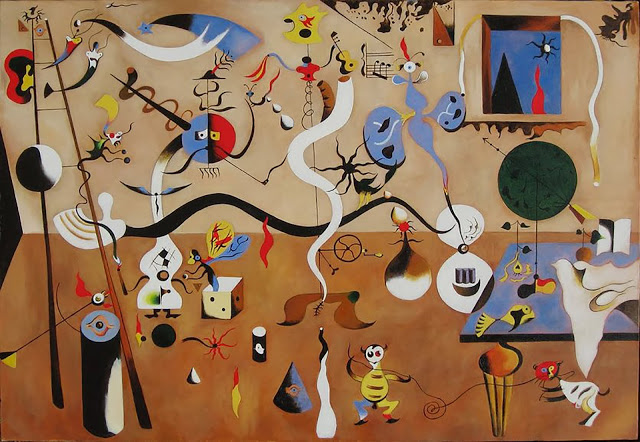
Carnival of Harlequin, 1925
Invention of Drip Painting
In 1936, Pollock was introduced to the use of liquid paint by Mexican muralist David Alfaro Siqueiros at his experimental studio in New York.
He later experimented with pouring paint as one of several techniques in his canvas works of the early 1940s, including "Men and Women" and "Composition with Pouring I. After moving to Springs, New York, he began painting on canvases laid out on the studio floor and developed a technique he later called "drip" painting.
.jpg)
Number 23, 1943
Roosevelt's Policy of Supporting the Arts
In the midst of the Great Depression, President Franklin D. Roosevelt initiated a program called "Public Works for the Arts" to stimulate the economy. Pollock and his brother Sanford (a.k.a. Sande) took jobs in the PWA's Mural Division. The program resulted in numerous works by artists of the same generation, including Pollock, Jose Clemente Orozco, Willem de Kooning, and Mark Rothko.
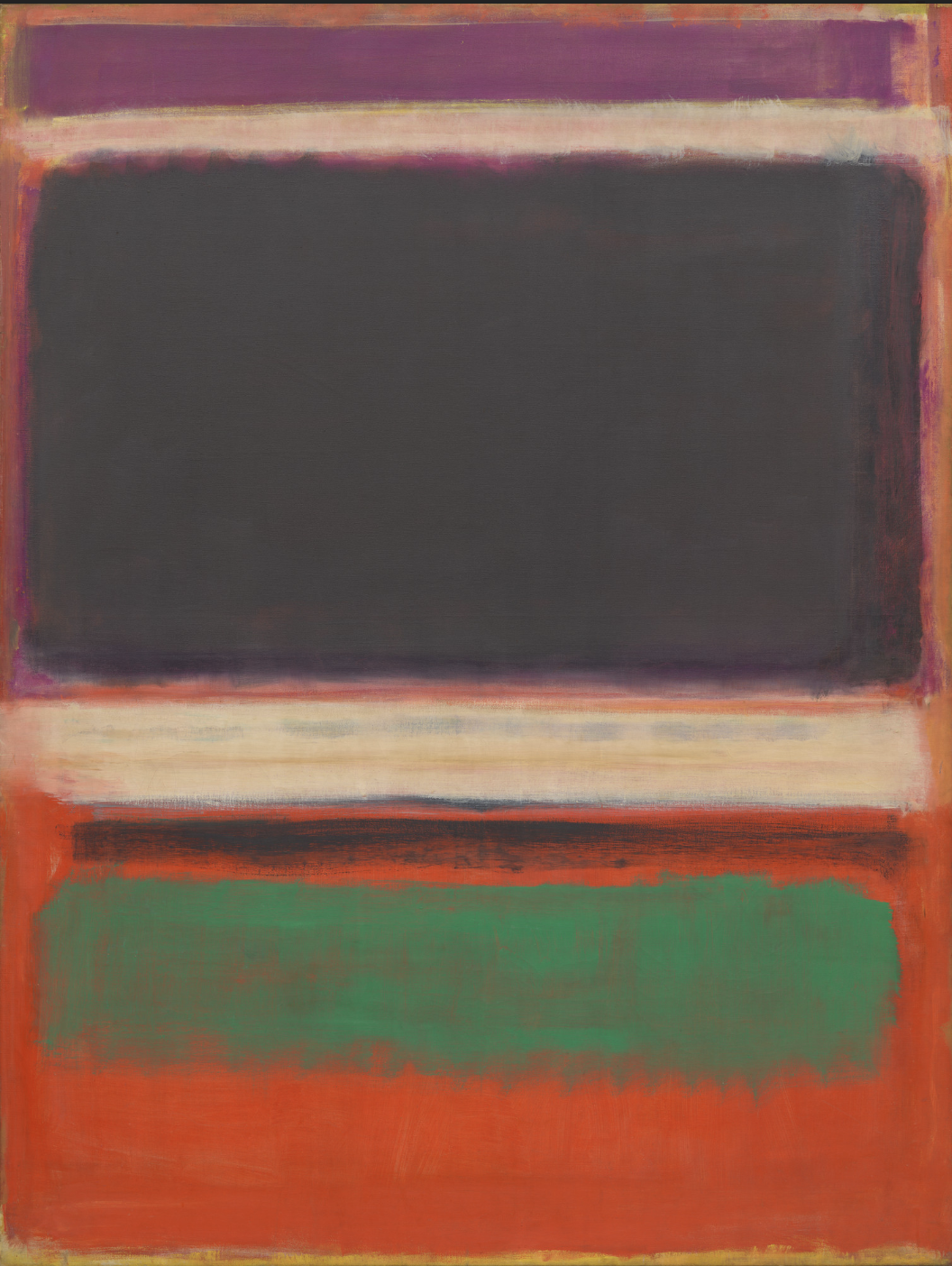
Mark Rothko
Art Making as Psychotherapy
In 1939, Pollock visited a Jungian analyst for treatment of alcoholism. This later became the food for his paintings, and Pollock came to understand his drawings not only as an outpouring of his own mind, but also as an expression on behalf of the fears of contemporary people living in the shadow of nuclear war.
Later, he began to use color and continued figurative elements. During this period, Pollock moved to a more commercial gallery, the Sidney Janis Gallery--the demands on his work from collectors were great. This pressure and personal frustration led to Pollock's growing alcoholism.
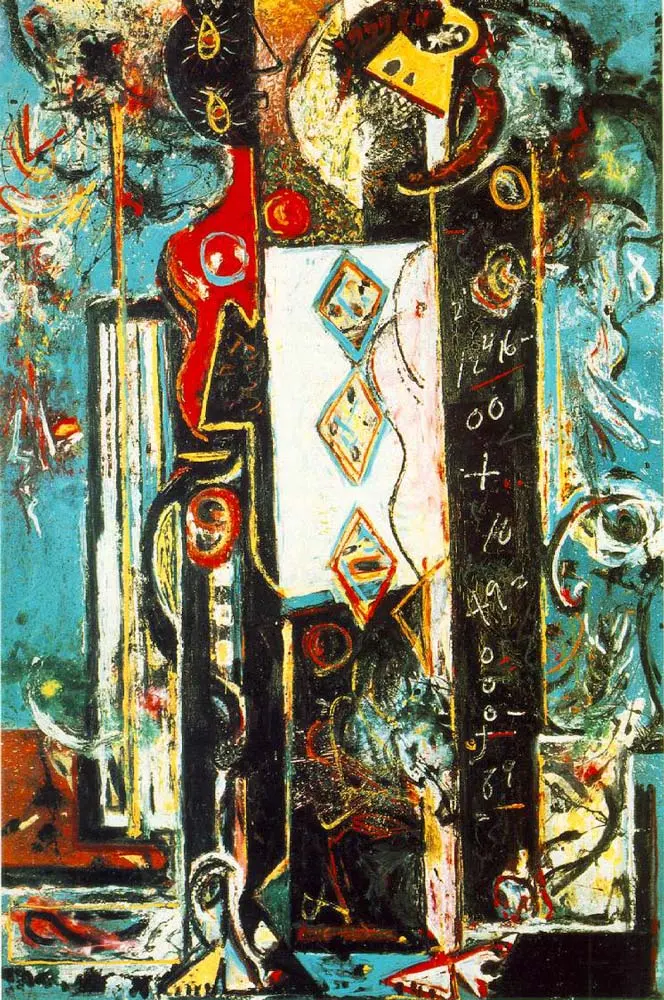
Male and Female, 1942
Late Life and Post-Death Influences
In December 1956, Pollock had a commemorative retrospective at the Museum of Modern Art in New York, followed by another in 1967.
Since then, his work continues to be honored on a large scale with frequent exhibitions at the Museum of Modern Art in New York and the Tate Museum in London. Today, he remains one of the most influential artists of the 20th century.
In 1973, "Number 11, 1952" (also known as "Blue Pauls") was purchased by the Whitlam Government of Australia for US$2 million (A$1.3 million when paid) by the National Gallery of Australia. This was the highest price paid for a modern painting at the time. The painting is now one of the gallery's most popular exhibits, and was the centerpiece of a 1998 retrospective at the Museum of Modern Art in New York, the first time it was shown in the United States since its purchase.
In November 2006, Pollock's "No. 5, 1948" was sold to an undisclosed buyer for US$140 million, making it the most expensive painting in the world.
In 2004, "No. 12, 1949," a medium-sized drip painting exhibited in the American Pavilion at the 1950 Venice Biennale, set another artist record when it fetched US$11.7 million at Christie's in New York. 2012 saw the sale of a silver gray with red, yellow, and Number 28, 1951, a combination of drips and brushstrokes in shades of blue and white, sold for US$20.5 million (US$23 million including commission) at Christie's in New York, bringing the estimated range to US$20 million to US$30 million.
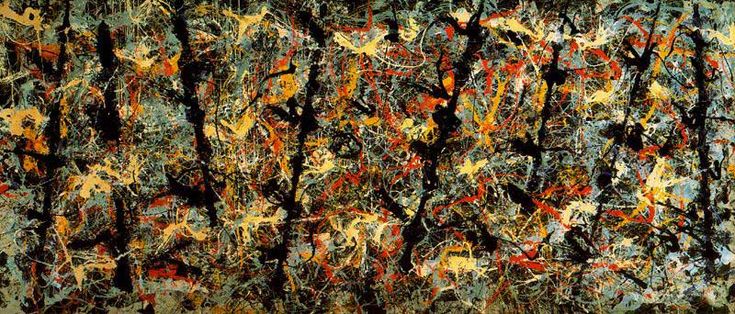
Number 11, 1952
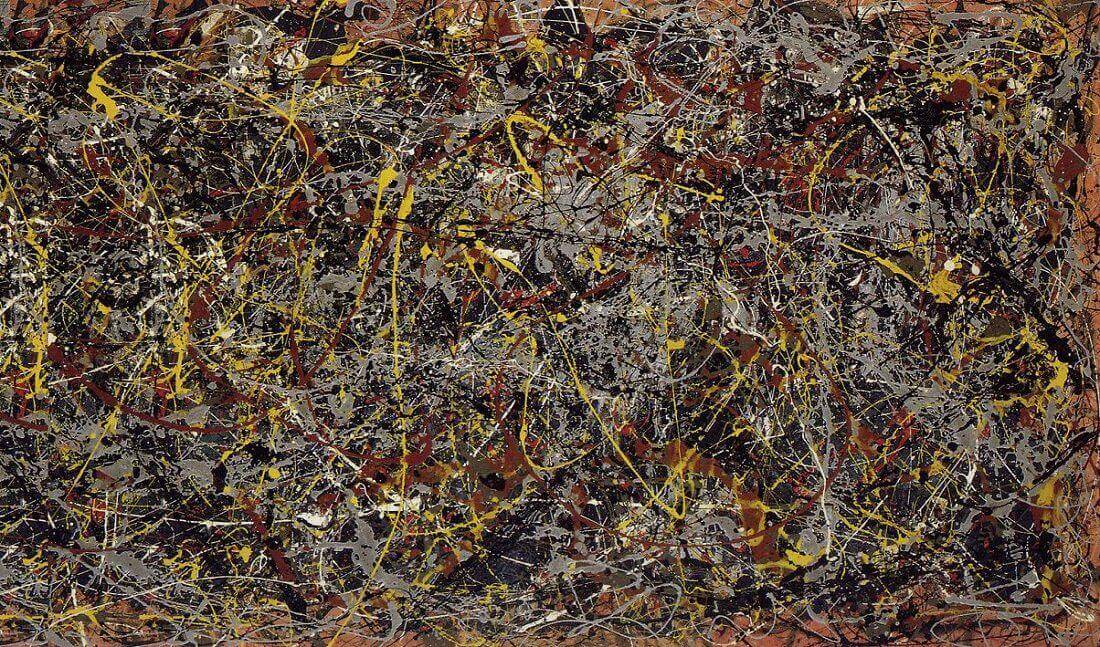
No. 5, 1948
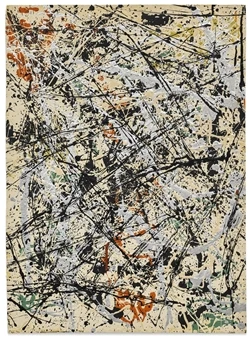
No. 12, 1952
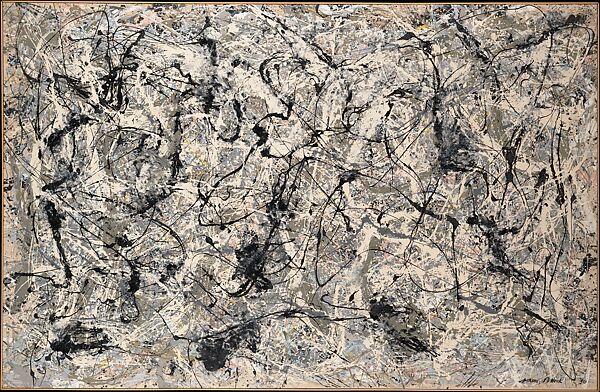
Number 28, 1951